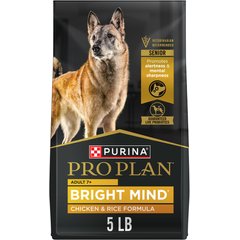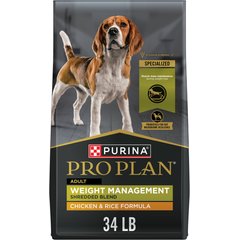Can Dogs Eat Peas?
NOTE: Always check with your veterinarian first before giving your dog any new foods, especially “people foods.” What might be OK for one dog might not be good for your dog, depending on multiple factors, such as their age, health history, health conditions, and diet. Dogs on prescription diets should not be fed any food or treats outside the diet.
Love ’em or hate ’em, peas are a nutrient-packed vegetable that make their way into our soups, salads, and side dishes. They’re super healthy for humans, but what about our canine companions? If your pooch is hoping for a bite of this tasty little legume, you may be wondering if dogs can eat peas.
Good news: peas are safe for dogs to eat. In fact, peas are considered a healthy treat for dogs and offer lots of nutritional value for them. Just be careful not to feed your dog too many (especially if they’ve never had peas before), and avoid any extra ingredients that can make them sick.
Are Peas Good for Dogs?
Peas are a nutritious and healthy source of vitamins and minerals, making them an excellent addition to your dog's diet. Despite their small size, peas pack a ton of protein and fiber into their little casings. They’re also rich in iron and other vitamins and minerals that can help support your dog's immune system, digestion, and overall health. Peas also contain antioxidants that can help reduce inflammation and help keep your dog healthy as they age.
Peas offer so many nutritional benefits that they’re becoming a common ingredient in commercial dog food. Just be sure to check with your veterinarian before making any major changes to your dog's diet, especially if your pup has any health conditions or sensitivities.
Vet Recommended Dog Food
- Eukanuba Premium Performance Puppy Pro Dry Dog Food, 4-lb bag$25.99Chewy Price
- Purina Pro Plan Bright Mind Adult 7+ Chicken & Rice Formula Dry Dog Food, 5-lb bag$24.68Chewy Price
- Purina Pro Plan Adult Weight Management Shredded Blend Chicken & Rice Formula Dry Dog Food, 34-lb bag$77.48Chewy Price
- Hill's Science Diet Adult Lamb Meal & Brown Rice Recipe Dry Dog Food, 33-lb bag$83.99Chewy Price
What Kinds of Peas Can Dogs Eat?
While peas can be good for your dog, not all types of peas are safe or nutritious for them to eat—especially if they’re prepared with extra ingredients like butter, salt, or spices.
Here's a breakdown of different types of peas and whether they’re safe for your furry friend:
Frozen Peas
As long as they’re not seasoned with salt or other harmful ingredients, frozen peas are fine for dogs to eat in small quantities. You can even give your pooch frozen peas right from the freezer as a treat, though cooking them will make it easier for them to chew.
Canned Peas
Unfortunately, canned peas are not recommended for dogs because they contain high levels of sodium. Foods high in sodium can lead to dehydration and other health issues. An occasional bite or two of canned peas will probably be fine, but regular helpings from the can may cause long-term problems for your pup.
Chickpeas
Chickpeas are a great source of protein, fiber, and other essential nutrients for dogs. Just make sure they’re thoroughly cooked before feeding them to your furry friend.
Black-Eyed Peas
Black-eyed peas are safe for dogs to eat, but they should be cooked and served plain without any seasoning or spices.
Snap Peas
Snap peas are an excellent source of vitamins A and C for dogs. But because the outer pods may be tough for some dogs to digest, it's best to serve snap peas cooked or chopped into small pieces.
How Many Peas Can Dogs Eat?
While peas offer dogs plenty of nutritional benefits, it's essential that these veggies are only fed in moderation. Too many peas can lead to digestive issues such as gas and diarrhea.
As with any other treats, keep the 10% rule in mind: All treats (including vegetables like peas) should only make up 10% of your dog’s overall calories. The other 90% should be from a diet of well-balanced dog food.
Here are some general guidelines for how many peas are safe for dogs to eat, based on their weight:
- Extra-small dog (2–20 pounds) = 1 teaspoon (or less) of cooked, plain peas per day
- Examples: Yorkies, Chihuahuas, Pomeranians, Pugs
- Small dog (21–30 pounds) = 2 teaspoons (or less) of cooked, plain peas per day
- Examples: Basenjis, Beagles, Scottish Terriers
- Medium dogs (31–50 pounds): 3 teaspoons (or less) of cooked, plain peas per day
- Examples: Basset Hounds, Border Collies, Australian Cattle Dogs
- Large dogs (51–90 pounds): 1–2 tablespoons (or less) cooked, plain peas per day
- Examples: Pit Bulls, German Shepherds, Labrador Retrievers, Australian Shepherds
- Extra–large dogs (over 90 pounds): 3 tablespoons (or less) cooked, plain peas per day
- Examples: Newfoundlands, Bernese Mountain Dogs, Saint Bernards, Great Pyrenees
Note that these are just general guidelines. It’s always best to check with your vet before making major changes to your dog’s food bowl.
How to Feed Peas to Your Dog
If you decide to add peas to your dog’s diet, prepare them without any other ingredients that can be harmful to your dog's health. It's best to serve peas plain and cook or steam them until tender. You may even want to mash them if your dog has trouble chewing or swallowing.
Try mixing a few peas in with your dog's regular food as a healthy food topper. You can also serve peas as a healthy snack instead of processed treats. Just make sure you don’t overfeed your dog, and always introduce peas slowly to their diet to avoid any digestive issues.
Featured Image: iStock/Mutovin




